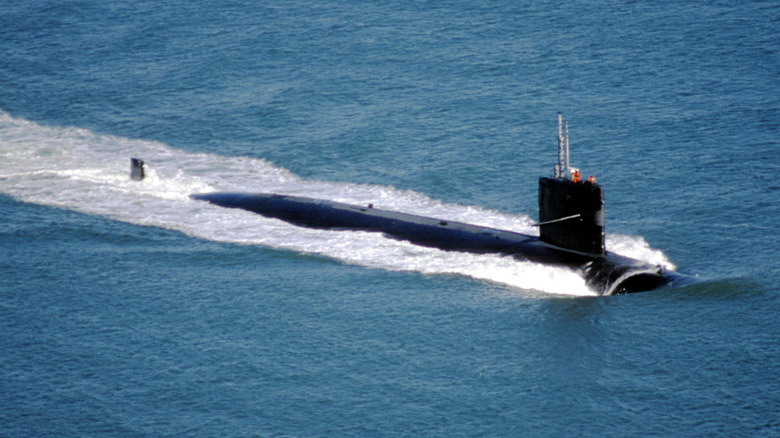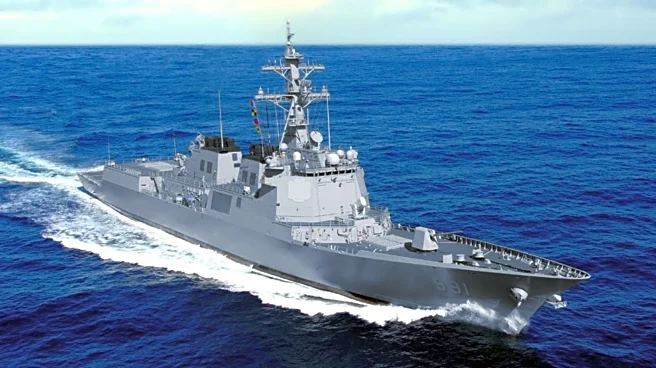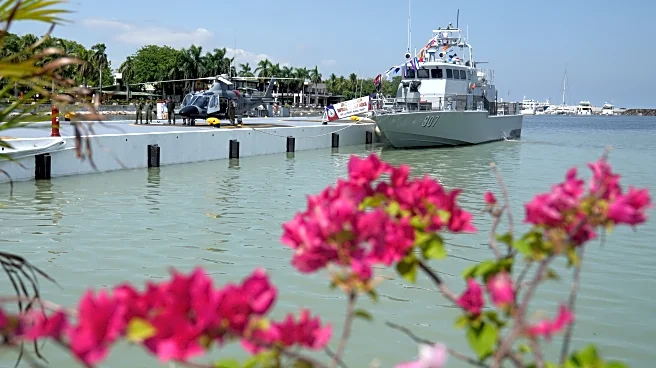
Diesel-electric submarines aren't just a poor man's nuclear alternative. They're a real problem for U.S. Navy surface and air ASW (anti-submarine warfare) crews. Their biggest advantage against AWS crews is silence. When running purely on battery, they're nearly undetectable, especially in coastal waters where sound bounces unpredictably due to currents, salinity, and bottom terrain. Add anechoic coatings and careful maneuvering, and you've got a target that active sonar can barely see and passive
sensors struggle to hear.
These boats also take advantage of geography. They live in the littorals: tight straits, crowded fishing lanes, and noisy commercial ports. In these areas, radar and sonar returns are cluttered, and the background noise camouflages the sound of the subs' engines. ASW aircraft crews can't easily pick them out from the noise of 30 other diesel vessels nearby. In war games and real-world patrols, skippers have used tricks like hiding among fishing fleets or slipping back into their own wake to mask movement.
Their small profile returns a weaker sonar ping. In tight, shallow water, that makes all the difference. Many smaller navies use these subs not just because they're cheaper, but because they can fight effectively on their own turf, and if an enemy sub is virtually undetectable, it poses a real threat no matter how small it is.
Read more: 10 Of The Largest Navies In The World, Ranked By Self-Reported Total Naval Assets
Air-Independent Propulsion Boats Turn That Threat Into A Nightmare

Air-independent propulsion (AIP) systems installed on diesel-electric subs changed the game in the worst way. Forget diesel boats that had to snorkel every few hours. AIP systems allow them to stay submerged for two to four weeks without surfacing. Sweden's Gotland showed the U.S. just how bad this could be when it repeatedly evaded detection during exercises with a U.S. carrier group. Germany's fuel-cell-powered Type 212s and 214s go even further. With no moving parts, they're almost completely silent. They also emit very little heat and need minimal crew intervention.
China, South Korea, Germany, Japan, and others are building or operating AIP-capable boats. And with LIB (lithium-ion battery) technology (one of the newer battery technologies that could revolutionize everything from EVs to smartphones) now replacing older lead-acid systems, even traditional diesel-electrics can stay underwater longer and move faster without giving away their position. South Korea's KSS-III subs combine LIBs and AIP for 20+ days of underwater operation at cruising speed.
That means fewer snorkeling events, fewer periscope sightings, and less chance to catch these subs with radar or Electronic Support Measures (ESM) gear. A sub that only surfaces every three weeks is a sub you're unlikely to detect until it's too late, or until it launches a torpedo into your destroyer from 15 miles away. For the U.S. Navy, which still lacks ASW weapons optimized for the littorals, that's a serious operational gap.
We're Not Training For What's Coming

The U.S. Navy has been warned about this for decades. Back in 1978, the XO of the USS Barbel flat-out told the Navy that the nation's ASW training against diesel boats was insufficient. Scenarios were set up with predictable snorkeling patterns, clear deep water, and no clutter. That's the opposite of what a real fight would look like.
Even now, most of the U.S. anti-submarine training is built around finding Soviet-era nuclear boats, not modern AIP threats. The Navy doesn't have its own diesel-electric subs to train against regularly, there's no rotation of sonar techs through ballistic-missile boats to let them listen and build pattern recognition, and the nation is still wasting expensive torpedoes instead of fielding simple, shallow-water depth charge systems that are more effective.
The technology gap is real, but the training gap is worse. In his brief, the USS Barbel XO laid out the shortcomings of the Naval Fleet, suggesting that a Soviet diesel-electric sub could be an effective threat against larger machinery, calling the smaller vessel a "highly selective, highly effective mobile minefield."
Want the latest in tech and auto trends? Subscribe to our free newsletter for the latest headlines, expert guides, and how-to tips, one email at a time.
Read the original article on SlashGear.













